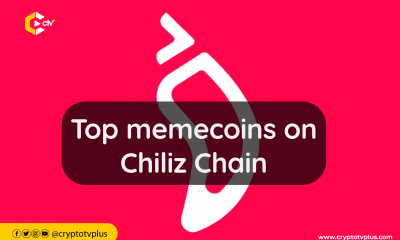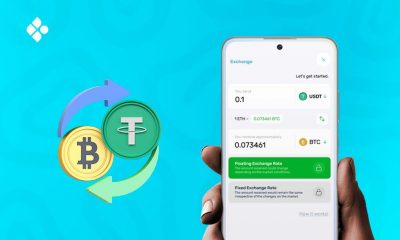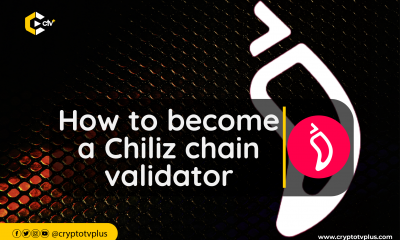Education
Top 10 trends in DAO & Web3 for 2023
Published
1 year agoon

A 30th DEX AMM version or an additional 10,000 image animal PFP collection is not necessary for the blockchain industry, claims Messari. It needs tools to make sure that cryptocurrency can’t be shut down. These tools essentially consist of hardware, digital wallets, web browsers, secure data tunnels, novel governance primitives, and social contracts.
Wallet and Browser
Messari asserts that the individual wallet, not an exchange-based account, is the cornerstone of the cryptocurrency industry. Wallets serve as digital money clips, identification credentials, and data storage containers. They enable access to protocols and assets that might not otherwise be supported by users’ preferred exchange, whether they are using a DeFi app, NFT, or DAO.
To enable immediate bank-to-crypto transactions, Sardine, a fintech company, collaborated with MetaMask. In addition to adding an SDK for developers looking to integrate fiat-to-crypto services directly within their dApps, Coinbase announced plans to expand Coinbase Pay to allow users to fund Coinbase Wallets directly from bank accounts. It also rolled out support for Ethereum dApps in its default mobile wallet. Ledger successfully integrated with several exchanges so that its clients could use CEX order books without giving up control of their private keys (Ledger hardware wallet FTX traders are SAFU).
Better wallet infrastructure makes personal crypto custody less of a purity test and more of an accessibility, safety, and user experience boost by assisting users in managing the “not your keys, not your coins” issue.
Additionally, good personal wallets reduce the gap between CeFi and DeFi and offer consumers better and more seamless options. While institutional investors may carry out DeFi transactions without ever having any assets leave their regulated custodians, retail traders may use central limit order books from their ledgers to complete their trades.
DePin
Messari believes that the fight against censorship will take place in the cloud and that the choice between a free internet and a world police state will depend on how successfully the blockchain community seizes control of that infrastructure from Big Tech monopolies.
Decentralized networks of physical hardware are supported by decentralized physical infrastructure networks (DePIN). It’s a non-trivial challenge to scale a hardware network to viability, which is required for things like file storage, wireless connectivity, and cloud computing. These things also demand significant capital outlay and operational hassles. As they coordinate large-scale decentralized hardware investments, tokens have demonstrated their effectiveness in accelerating the growth of these networks.
Three of the world’s biggest and most dependable tech companies—Microsoft, Google, and Amazon—control this market. This means that compared to other cryptocurrency markets, partnerships, company development, and organic demand may be more difficult to come by. Success also depends on the trend toward increased Big Tech censorship continuing. According to Messari, there is a huge market opportunity for serving the gray market, and crypto infrastructure will expand tremendously in areas where governments tighten their control over dissent and crack down on expression.
The same factors that make this industry difficult, in Messari’s opinion, will also make it crucially relevant and fascinating for investors in the years to come. Spending tens of billions of dollars. the skeleton of the free and open internet.
If tech behemoths don’t want to touch DeFi or DeSoc in the long term, those massive apps will ultimately use Filecoin and Arweave to get started. This appears to be one of the crypto markets with more linear growth in terms of demand size.
Utility and more direct tackling of sales and partnerships are key drivers of demand. It is less motivated by speculative tokens (which have a much bigger impact on the supply side). Check out Filecoin for more insight; over the past 18 months, both storage capacity and utilization have increased largely linearly.
Data Integrity
The three main sources of data in cryptocurrency are “real-world” data that is transferred into cryptocurrency through oracle services like Chainlink, off-chain markets data (such as CEX order book data), and blockchain transaction data (including metadata). To the fullest extent possible, encryption (and DeFi in particular) requires improved standards, dependability, and access to safe, validated “real-world” data.
The Graph is now the most important decentralized data infrastructure initiative in terms of on-chain data. Data consumers generally use APIs to retrieve blockchain data that would not otherwise be well-structured or accessible. For general-purpose datasets, the majority of data providers, including Coin Metrics and Glassnode, only give a small selection of API endpoints. It is up to the offering entity (like Coin Metrics or Glassnode) to add more endpoints. The Graph, on the other hand, provides tools that let the developer community (or separate teams and businesses) create open APIs of specialized subgraphs that data consumers can query to power distinctive application features. Subgraphs are open APIs that anybody may create and publish, making data readily available.
There is a need for a robust oracle infrastructure about off-chain data sources (whether crypto asset prices or any other conceivable feed). Chainlink continues to be the market leader with hundreds of oracle networks and partner projects in its ecosystem. Leading initiatives like Aave, Compound, and Synthetix all rely on Chainlink’s network for off-chain data, and they seem to be the only oracle platform that has experienced consistent active user growth, as opposed to API3, Band, and other oracles, which all appear to have plateaued after experiencing rapid post-launch growth.
Actually useful DAOs
Since the beginning of this industry, terms like “DAOs” (decentralized autonomous organizations) have been used. They can be broadly compared to subreddits with governance and bank accounts. A straightforward yet effective framework for addressing our most critical coordination problems. Messari foresaw that 2022 would be “the year of the DAO” in his 2021 prediction. Although it won’t happen quickly, there are great hopes that DAOs will revolutionize innumerable sectors of the economy, politics, and society at large in the years to come. In recent weeks, Vitalik has increased his enthusiasm for DAOs.
Blockchain technology enables centralized marketplaces to operate automatically, providing their auxiliary contributors with more profit potential, independence, and administrative authority. In a crypto lending protocol, lenders and borrowers control the fees and risk criteria for the “code bank” and are paid for doing so. Pricing tiers and safety requirements are controlled by drivers and riders in a crypto ridesharing protocol. Patients with a rare disease can generate money for their research into treatments and then profit if a medicine is successfully sold. This is possible through DAOs.
According to Messari, to comprehend the rationale behind its optimism, it is necessary to comprehend the distinctive, order-of-magnitude benefits that DAOs may provide contributors with (at least theoretically). These are:
- Unprecedented control over the direction and investment of money in comparison to conventional business structures Owners of DAO is genuinely its donors and employees.
- It is significant and intrinsically decentralizing for people to have the freedom to leave a DAO, withdraw money from its bank account whenever they want, and resign without facing consequences.
- A speed and cost improvement of an order of magnitude in spinning up and winding down entities. (However, real-world jurisdictions continue to be a hassle and a financial drain.)
DAO Management
According to Messari, saying DAOs are managed is a little bit ambitious. The report revealed once more how disorganized and chaotic the political procedures are in DAOs. “If you think email and Slack are time sucks, try Discord… if you think elections are rife with dark money conflicts, wait until you hear about metagovernance and bribes.”
It is sufficient to say that the DAO’s current management arrangements are unsustainable. But the range of governance instruments that help them keeps expanding quickly.
Messari released Governor V2 last year, a platform that lets users look for DAOs, track and vote on ideas, and easily compare the best tools that other DAOs are using.
To enable consumers to swiftly separate “signals from noise” in DAOs, Messari reiterates its commitment to doing so. People should focus their attention on essentially two categories in DAOs. the concentration of true vote-winners among the delegates and how they are distributed, as well as the developers who control the code.
Messari claims that enhanced subDAO infrastructure and “pod” level decision-making capabilities are the answers to the DAO operations mess. To make it simpler for DAOs /to assign duties to subcommittees, Metropolis (previously Orca Technology) has developed an access token protocol that wraps around community-governed Gnosis Safes (multi-signature wallets).
The DAO Legal Liabilities are “Spooki”
The CFTC filed a lawsuit against Ooki DAO last year for selling products involving leverage and margin trading without first becoming a Futures Commission Merchant. One of those projects with a decentralized name only, Ooki believed it would be clever to encase the outdated, centralized bZx trading system in a decentralized autonomous organization (DAO), along with some voting tokens.
The CFTC had previously reached a settlement with bZx and its founders, but the regulator later objected, claiming that since Ooki DAO voting members were essentially operating the same illegal venture that the founders and predecessor company had admitted to, they should all be held personally accountable. It may seem extreme, but if this idea of “joint and several” liability for DAOs (deemed unincorporated associations) were to become law, it would severely limit the creativity and involvement of DAOs.
Fortunately, the crypto legal community caught wind of one commissioner’s dissent and quickly provided several amicus papers to help. Their main worries weren’t about the bZx founders or corporate organization (who had once again settled), but rather the precedent this would create for decentralized communities. In all subsequent enforcement actions involving entities in which they had participated, they would be presumed guilty until proven innocent.
DAO corporate actions
In 2022, there was significant tokenll voting power. The Juno community also decided to seize tokens from a dishonest airdrop farmer.
- Modified Governance Bylaws: Lido’s dual-class governance reform addressed potential conflicts that would have jeopardized the security of stETH holders. The protocol could have been changed to steal staked ETH from users because Lido DAO had control over the code underlying the enormous stETH pool. The DAO, which at the time had a treasury of roughly $400 million, was a popular target for governance attacks since DAO token holders may not have had the same incentives as other stakeholders in its operations.
- Executing Large Buyback Programs: BitDAO, the second-largest DAO in the world, is repurchasing $1.5 million worth of tokens daily.
- Restructures & Unwinds: After a rocky multi-month search, Sushi chose a new head chef, and FEI shut down its $200 million treasury and DAO, capping a turbulent 18-month experiment. (Not everybody was content with the outcome.)
- Spin-Outs from Gnosis: Owners of GNO tokens discovered their worth! Following the launch of Gnosis’ CowSwap token and its split from CoW, an MEV-resistant decentralized exchange, the GNO token had an intraday increase of 50%. A separate SAFE token with independent governance was also approved by Gnosis. and to destroy 68% of its untapped treasury. A $500 million protocol restructuring in real-time.
- Additional Tokens Went Private: Chain purchased Measurable Data Token for $100 million; Helium voted to move to Solana; Atom 2.0 was rejected by the Cosmos community; and Terra 2.0 was authorized.
Numerous acquisitions of protocols and possibly even more “take-privates” of networks. There are hundreds of formerly well-known projects with operational products whose tokens now have a market cap of less than $50 million and appear to be good targets, similar to Chain’s acquisition of MDT.
DAO Treasury Management
Despite the lessons learned from the past, the majority of DAOs still fail to appropriately diversify their treasuries or devote much time to effective community budgeting procedures.
Currently, just $8.7 billion is held by DAO treasuries, and only 60 DAOs have assets worth $10 million or more, according to DeepDAO. The initiatives are made even more vulnerable to market downturns by the fact that native tokens still account for 80% of these treasury assets, making them extremely illiquid in terms of operational budgets.
Given the disastrous decline in cryptocurrency values last year, several high-flying 2021 protocols have virtually been demoted to Series A status, suggesting that the immediate future of crypto protocols will continue to flow through foundations and VC-backed corporate entities.
There are many compelling reasons to hold a sizable percentage of native tokens, including governance power, alignment with other token holders, health signals, and reserves for DAO2DAO M&A and partnerships.
Mesari thinks that more combative thinkers in the DAO sector are needed in the blockchain industry. There are plenty of bull market newcomers out there who are about to have a nasty surprise when they are thrown into a multi-year deep end without a life jacket. Financial management platforms like Coinshift, Multis, and Parcel will start to emerge, and community “banking” will receive significant advancements.
Crypto Talent Marketplaces
For crypto talent marketplaces, Messari refers to Alex Svanevik’s stance where he stated:
“I think 2023 will be a bloodbath for crypto startups:
- Most ‘21/22 seed startups run out of money.
- Some get acquired [We’re on the prowl].
- A few raise new rounds (>80% down rounds).
- Tech salaries come down.
- Tech job titles deflate [No Chief Fun and Chaos Officers].
- VCs invest in other sectors (AI, etc.).”
Messari disclosed that it had recently launched Hirechain, a referral-based talent marketplace for cryptocurrency. The “friends refer-friends” concept is 1000 times more effective than the daily average of 73 unsolicited recruiting emails.
Media DAOs
Weirdly, the effects of the FTX bankruptcy may soon force the sale of two of the biggest crypto media brands. To begin with, there was the shocking report that The Block’s current CEO, Mike McCaffrey, had secretly obtained $43 million in loans from the disgraced FTX founder to carry out a coup d’état against The Block’s founder, Mike Dudas, in 2021 (including $16 million in slush funds that appeared to have been used in part to purchase a luxurious apartment in the Bahamas). There is a risk of a talent exodus as long as McCaffrey remains the company’s primary stakeholder. He promptly announced his retirement as CEO and the company’s sole board director. A company restructuring should be anticipated.
Messari believes that funding a media DAO is a different ball game from operating it successfully. Below are the two ways Messari believes a Media DAO can work.
- Establish a Constitution DAO-like community that is granted lifetime subscription privileges in exchange for an access token. You could raise $10 million from 10,000 lifetime members using Juicebox or another platform. Make an offer on the business using it. If there is no agreement, the money is kept in escrow and returned. You should certainly give it a shot given the execution difficulties (NDAs with non-solicitation clauses) and entirely unattached value expectations the present crypto market leaders appear to have.
- To abduct a critical mass of journalists from various organizations, and carry out the same action but make the application process accessible to all applicants. Offer them a 20% raise on their 12/1 paystub, but only do the DAO if you can also employ 25–50 of the best candidates in the market on Day 1.
Read Also:












